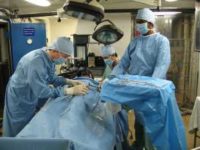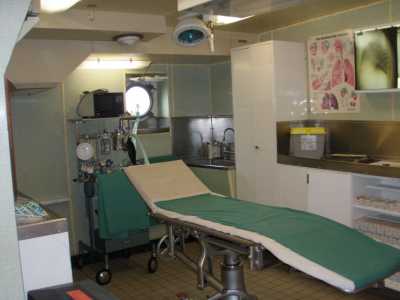Author Interviews, BMJ, Outcomes & Safety, Surgical Research, UCLA / 03.05.2018
For Your Surgeon, Do You Want Younger Hands or More Experience?
MedicalResearch.com Interview with:
 Yusuke Tsugawa, MD, MPH, PhD
Assistant professor
Division of General Internal Medicine and Health Services Research
David Geffen School of Medicine at UCL
Los Angeles, CA
MedicalResearch.com: What is the background for this study? What are the main findings?
Response: We studied whether patients’ mortality rate differ based on age and sex of surgeons who performed surgical procedures. Using a nationally representative data of Medicare beneficiaries aged 65-99 years who underwent one of 20 major non-elective surgeries, we found that patients treated by older surgeons have lower mortality than those cared for by younger surgeons, whereas there was no difference in patient mortality between male and female surgeons. When we studied age and sex together, we found that female surgeons at their 50s had the lowest patient mortality across all groups.
(more…)
Yusuke Tsugawa, MD, MPH, PhD
Assistant professor
Division of General Internal Medicine and Health Services Research
David Geffen School of Medicine at UCL
Los Angeles, CA
MedicalResearch.com: What is the background for this study? What are the main findings?
Response: We studied whether patients’ mortality rate differ based on age and sex of surgeons who performed surgical procedures. Using a nationally representative data of Medicare beneficiaries aged 65-99 years who underwent one of 20 major non-elective surgeries, we found that patients treated by older surgeons have lower mortality than those cared for by younger surgeons, whereas there was no difference in patient mortality between male and female surgeons. When we studied age and sex together, we found that female surgeons at their 50s had the lowest patient mortality across all groups.
(more…)
 Yusuke Tsugawa, MD, MPH, PhD
Assistant professor
Division of General Internal Medicine and Health Services Research
David Geffen School of Medicine at UCL
Los Angeles, CA
MedicalResearch.com: What is the background for this study? What are the main findings?
Response: We studied whether patients’ mortality rate differ based on age and sex of surgeons who performed surgical procedures. Using a nationally representative data of Medicare beneficiaries aged 65-99 years who underwent one of 20 major non-elective surgeries, we found that patients treated by older surgeons have lower mortality than those cared for by younger surgeons, whereas there was no difference in patient mortality between male and female surgeons. When we studied age and sex together, we found that female surgeons at their 50s had the lowest patient mortality across all groups.
(more…)
Yusuke Tsugawa, MD, MPH, PhD
Assistant professor
Division of General Internal Medicine and Health Services Research
David Geffen School of Medicine at UCL
Los Angeles, CA
MedicalResearch.com: What is the background for this study? What are the main findings?
Response: We studied whether patients’ mortality rate differ based on age and sex of surgeons who performed surgical procedures. Using a nationally representative data of Medicare beneficiaries aged 65-99 years who underwent one of 20 major non-elective surgeries, we found that patients treated by older surgeons have lower mortality than those cared for by younger surgeons, whereas there was no difference in patient mortality between male and female surgeons. When we studied age and sex together, we found that female surgeons at their 50s had the lowest patient mortality across all groups.
(more…)



